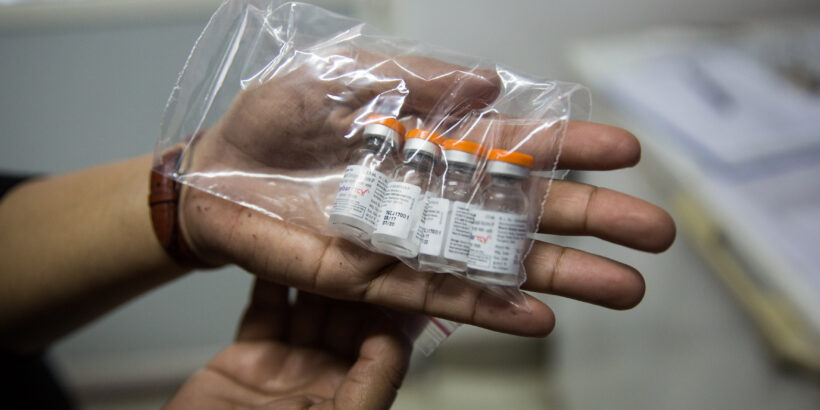India has one of the highest typhoid burdens in the world with an estimated 44.8 million cases in 2019; 54 percent of cases were among children younger than 15 years old. Local policymakers have long weighed the value of typhoid vaccination programs among public health priorities. In 2018, the Navi Mumbai Municipal Corporation (NMMC) conducted the first ever public-sector typhoid conjugate vaccine (TCV) campaign. Results from a recent study share the first programmatic effectiveness results from TCV introduction through a mass vaccination campaign.
TCV campaign in Navi Mumbai municipality
In 2018, NMMC and partners conducted a public-sector TCV campaign. In its first phase, the campaign reached more than 113,000 children aged 9 months to 14 years with a single dose of TCV, covering 71% of the intended population. A planned second phase of the campaign to reach the remaining communities was halted due to the COVID-19 pandemic.
Vaccine effectiveness is strong
A recent publication shares data from an evaluation of the programmatic effectiveness of the TCV campaign. Between September 2018 and March 2021, blood-culture samples were collected from children who had a fever for more than three days. Children were between the ages of 9 months and 15 years. Blood culture-confirmed typhoid cases from the children eligible to receive the vaccine in the campaign communities were compared to the children residing outside of the campaign communities to determine TCV effectiveness at the community level.
Among the 81-blood culture-positive typhoid cases, 36 were collected from children residing in vaccine campaign communities, yet not all of them were vaccinated. The remaining 45 were collected from children residing outside of vaccine campaign communities and were therefore unvaccinated. The programmatic effectiveness was 56 percent in the vaccine campaign communities compared to the communities not offered vaccination. This means that typhoid cases were 56 percent less likely to occur in the communities where TCV was offered than the communities not offered TCV.
Among older vaccinated children (≥ 5 years), the programmatic effectiveness was 63 percent, and for younger vaccinated children (<5 years old), it was 30 percent. The lower programmatic effectiveness in the youngest children could be because they were not age-eligible to receive TCV during the campaign but were eligible for inclusion in the surveillance study. Additionally, there were fewer children in the younger age group. The analysis found that the overall programmatic effectiveness of the TCV campaign is consistent with a vaccine that is 80 percent effective.
TCVs effectively reduce typhoid burden
This effectiveness study concluded that the TCV vaccination campaign successfully reduced typhoid burden among children in the campaign communities. The findings support TCV introduction into routine immunization programs through campaigns in typhoid-endemic countries as an effective population-based tool to decrease typhoid cases in children. India recently decided to introduce TCV nationally and these data strongly support this decision.
TCVs effectively prevent typhoid at both the individual and community levels. Decision-makers should consider the results of this study when deciding on the introduction of TCVs into their national immunization programs.
Photo: TCV vials are readied for use. Bill & Melinda Gates Foundation/Sam Reinders.



